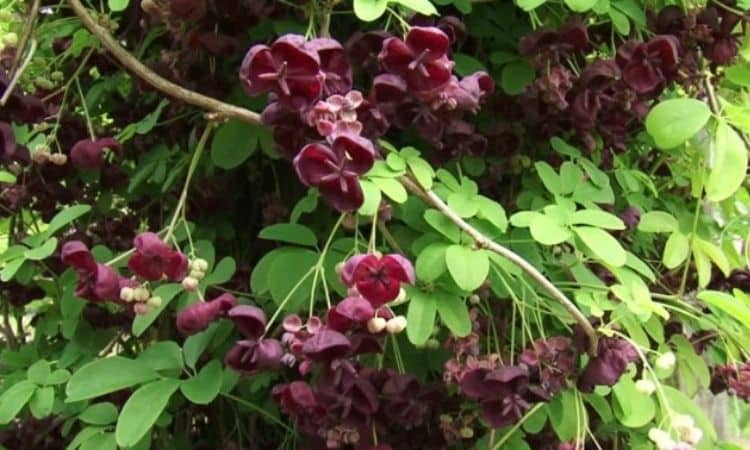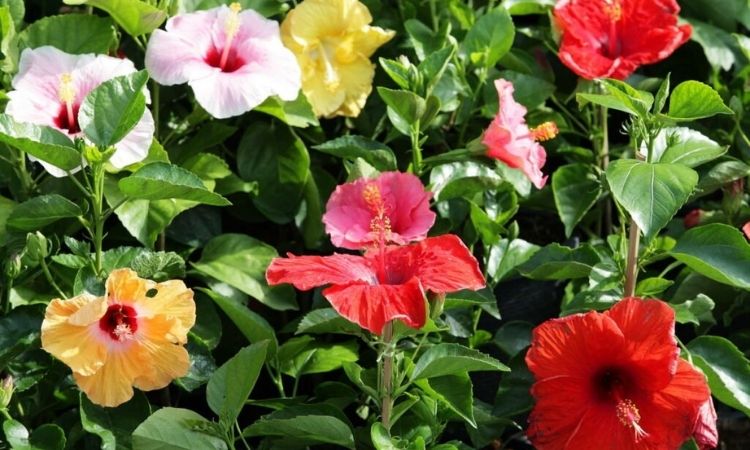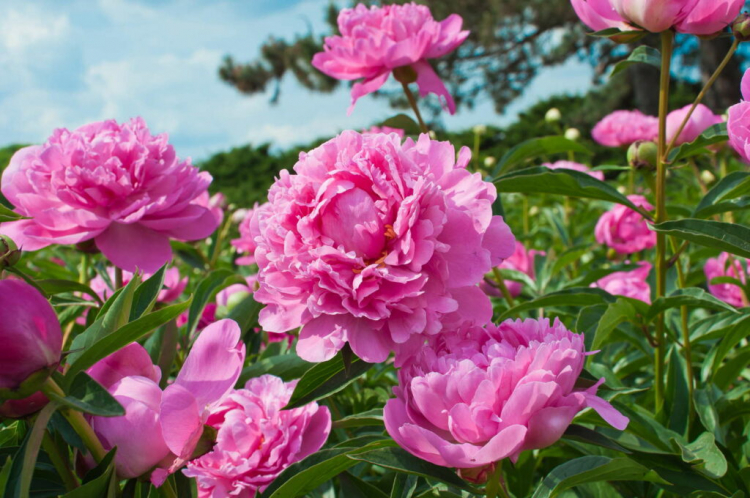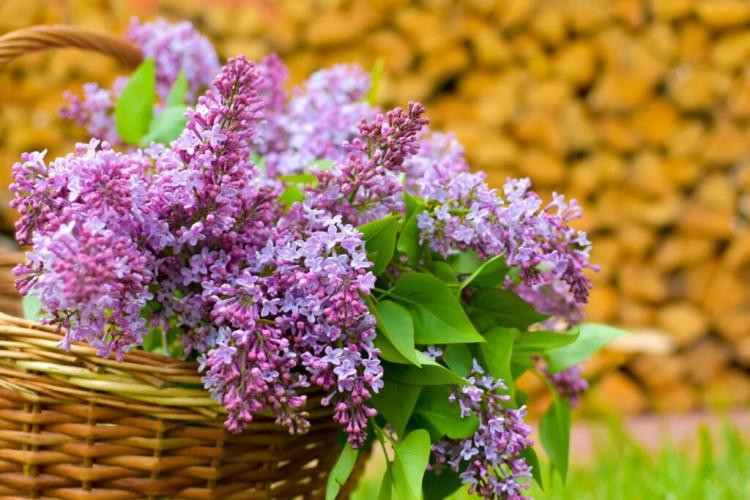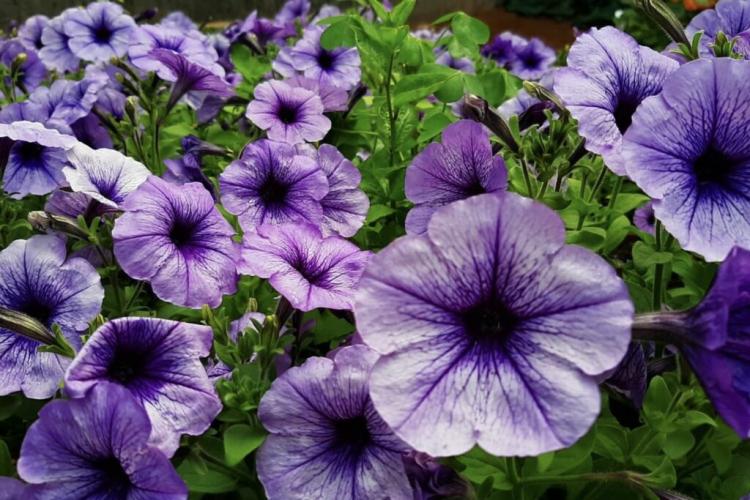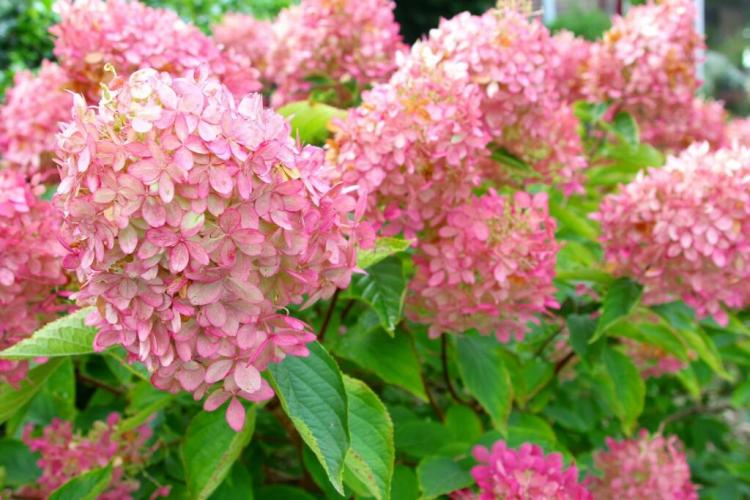Akebia Quinata: Tips On Location, Planting & Care Of Chocolate Wine
Akebia, also known as chocolate wine or climbing cucumber, is very popular as a decorative climbing plant. We tell you what to look out for when planting chocolate wine and give tips on how to take care of the Akebia Quinata.
Are you wondering what chocolate wine is? Behind this name lies a fascinating climbing plant. It owes its name to the enchanting scent of its flowers. We introduce you to this beauty and show you how an Akebie can soon decorate your garden.
Akebia: Origin And Characteristics
Table of Contents
Akebia is a plant genus consisting of several species. The finger-leaved Akebia quinata is available as an ornamental plant in Europe. It is also called chocolate wine because of the sweetish scent of its flowers, which reminds me of vanilla and chocolate. The fruits resemble a cucumber in their shape, which is why it was given the name climbing cucumber.
Akebia Quinata originates from the mountain forests of East Asia and is common in China and Japan. The Akebia enchants with its mostly dark green leaf dress, which only falls off in particularly cold winters, and wonderfully fragrant flowers. The fruits of the climbing cucumber, usually planted as an ornamental plant, are edible and make it an exciting plant even in autumn.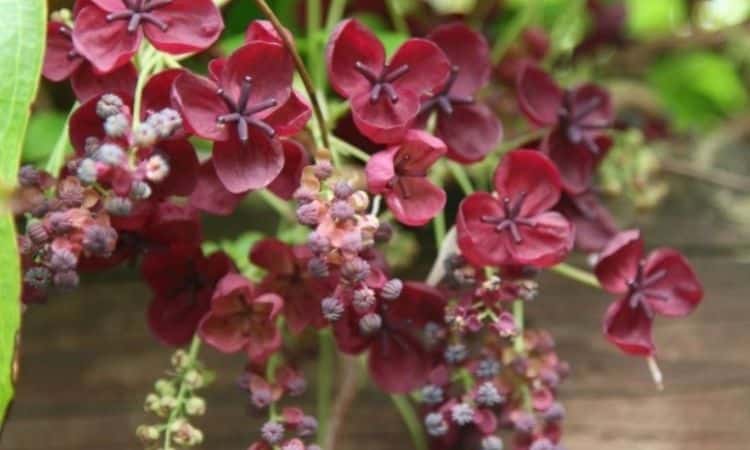
If you have replanted the Akebia, you should have a little patience. The Akebia grows slowly in the first two years and only shows its dense foliage in the third year. After about five years you will be able to enjoy the wonderful scent of the flowers for the first time from April to May. But it is worth the patience. The Akebia Quinata is a rarity and an eye-catcher in your garden. The plant grows on a climbing aid, such as a pergola, or as a facade greening up to ten meters in height.
The Most Beautiful Varieties
The different varieties of the finger-leaved Akebia Quinata, also known as climbing cucumber, are characterized by the different coloration of the flowers and leaves. Akebia quinata ‘Silver Bells’ presents white male flowers with dark purple stamens and pink colored female flowers. The variety Akebia quinata ‘Alba’ has white female and male flowers, whereas the variety Akebia quinata ‘Variegata’ stands out with white-spotted leaves.
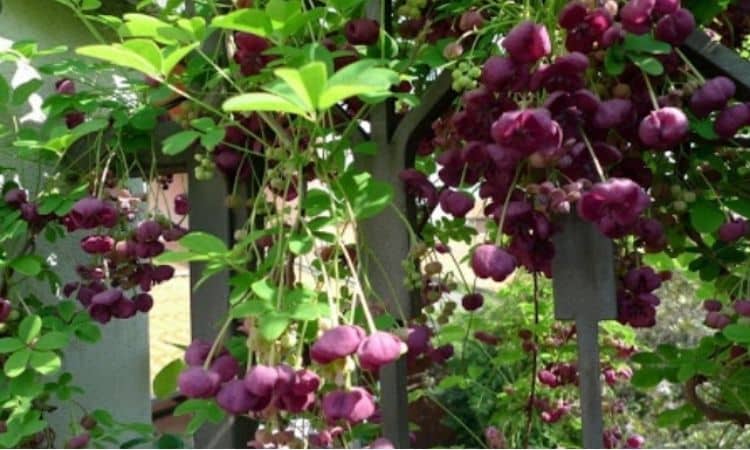
Planting chocolate wine: location, timing, and procedure
As a climbing plant, the chocolate wine only feels at home outdoors. You should choose a sunny to semi-shady location, sheltered from the wind, for this heat-loving plant. Although the chocolate wine comes from the subtropical area, it is hardy. At temperatures below -10 °C, the root area should be covered with leaves or similar.
The soil can be sandy to loamy, but should definitely be humusy, as the Akebie only blooms when there is a good supply of nutrients. The Akebia is best planted in spring to ensure that it can grow until the first winter. With the little sun and occasional rain, it has the best conditions for growing.
If you want to use the Akebia as a façade greening, you should dig the planting hole about half a meter from the wall to give the roots enough space. Since Akebias form underground shoots for propagation, so-called rhizomes, we recommend a rhizome barrier.
For this purpose, you can remove the soil with a bucket or plastic pot with a diameter of about one meter and place the ring in a planting hole of the same size. The upper edge of the ring should remain just above the surface of the soil.
You might so like: Peonies Transplanting: Location, Timing, And Instructions
You can now plant the plant in the middle of the hole, press it down well, and water abundantly. Especially during the next three weeks, you should make sure that the water supply is good. To guide the chocolate wine to your climbing aid or pergola, it is best to stretch several ropes to your desired location.
How do I plant chocolate wine?
- Sunny and wind-protected location.
- Humusy soil for good nutrient supply with peat-free potting soil.
- Planting hole with a one-meter diameter.
- Install the rhizome barrier in the planting hole.
- To pay attention to a good water supply for the first three weeks.
Treat chocolate wine: Everything for cutting, pouring and fertilizing
Chocolate wine is a lignifying climber that tends to clog up the lower part of the plant. To prevent this, individual shoots can be cut back vigorously. Avoid shortening all shoots at the same time, so as not to weaken the plant too much. Unwanted shoots can be removed directly after flowering.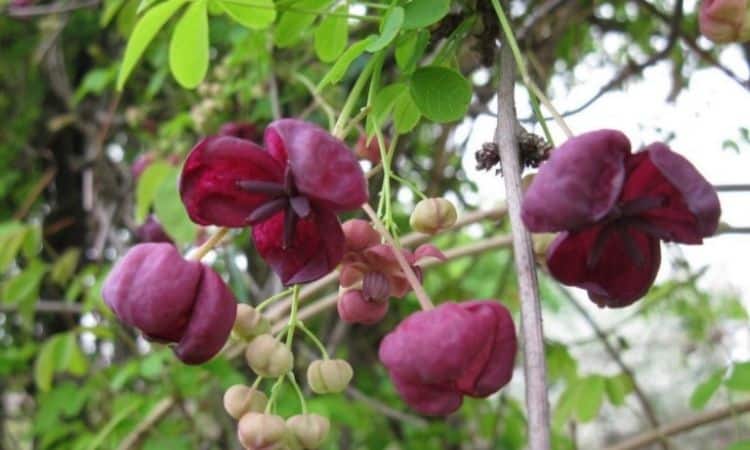
During the first three weeks after planting and the following summer, you should ensure a good water supply, as the plant does not yet have deep roots. It strengthens and vitalizes the plant with all the valuable nutrients. This makes Akebie less susceptible to pests and diseases.
Propagating
Akebia Quinata can be propagated by sowing the seeds, which are about five millimeters in size, or by cuttings. Due to the very slow development of the seedlings, we recommend propagation via cuttings. These offshoots often form by themselves. As soon as a shoot rests on the ground, it begins to take root at the point of contact.
This can also be done by bending a shoot with a stone and weighing it down. You can always check to see whether the shoot of the climbing cucumber has already grown firmly and has thus taken root. If this is the case, you can cut the shoot to the mother plant. After a few weeks, you can dig out the shoot and plant the climbing cucumber in another location.
Are Akebias bee-friendly?
Akebia Quinata flowers are of little interest to bees because the flowers do not contain nectar. We, therefore, recommend that you sow a bed of a flour mixture around the Akebie in which bees and other beneficial insects feel comfortable. Our beneficial insect magnet is a seed mixture that allows you to create such a paradise for beneficial insects in no time at all.
Chocolate wine fruits: edible or poisonous?
The fruits of chocolate wine are not poisonous, but edible and are considered a delicacy in Asia. The leaves of chocolate wine are also non-toxic and are even used as a tea in some regions of Asia. Especially in warm regions of Germany, where for example wine is also grown, you can expect to harvest fruits from your climbing cucumber in October.
Depending on the variety, the cucumber-shaped fruits are five to 12 centimeters long, dark brown, and covered with a layer of wax. When fully ripe, the fruits burst open by themselves and reveal a whitish, slightly sweet flesh.
